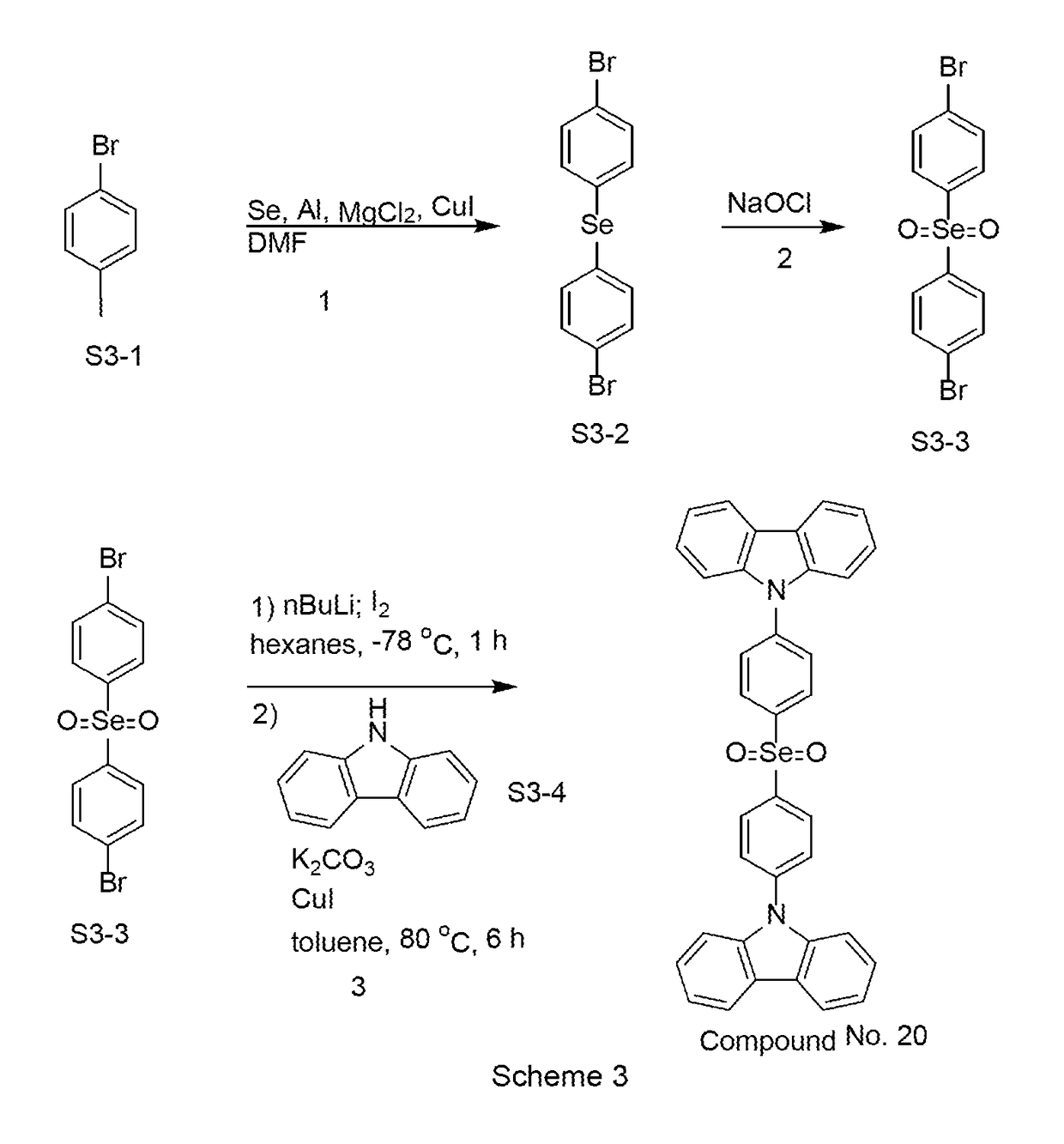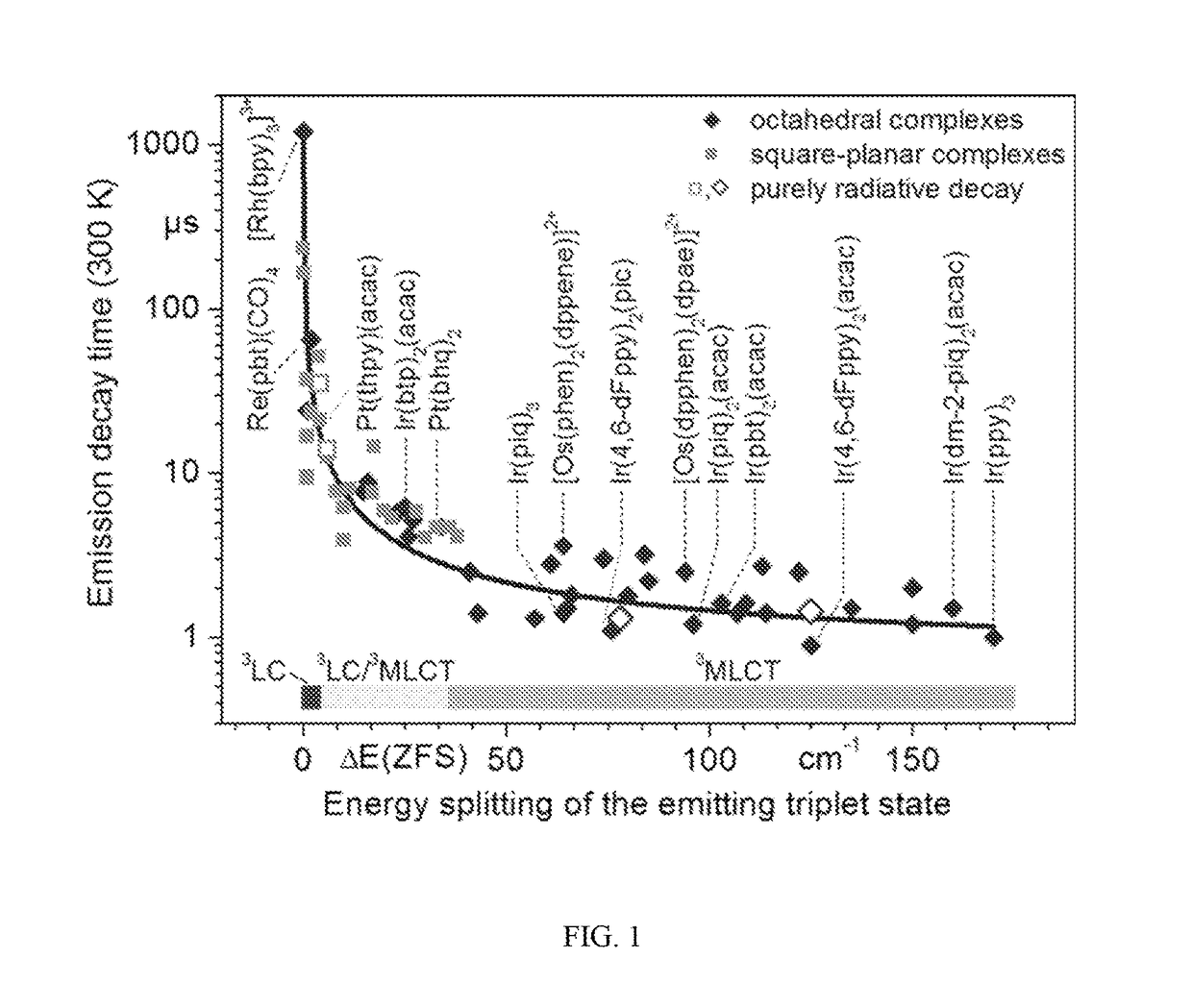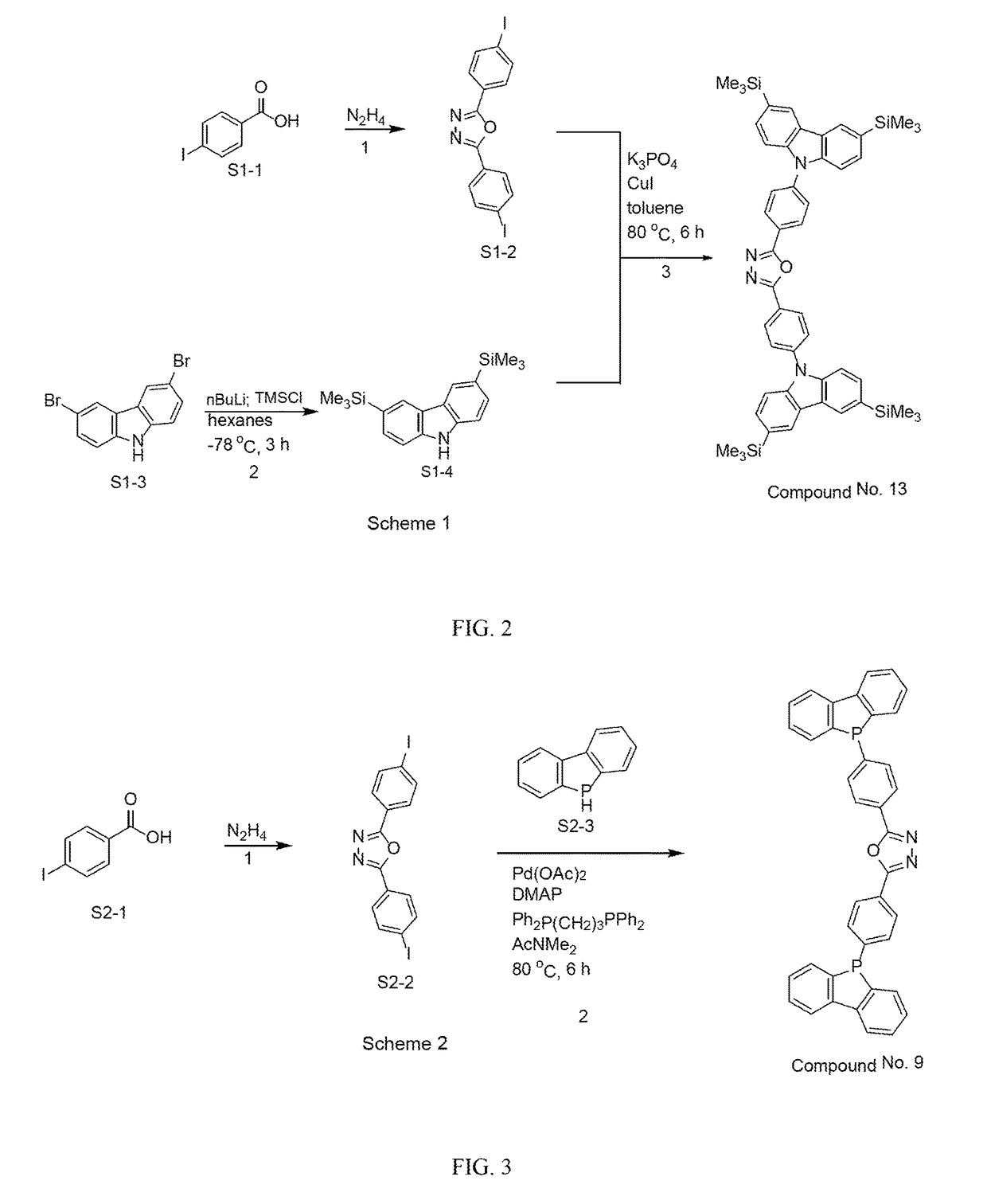Organic light-emitting diode materials
a light-emitting diode and organic technology, applied in the field of organic light-emitting diode materials, can solve the problems of phosphorescent materials performance limit, achieve the effect of delayed fluorescence, high excitation state, and rapid degradation
- Summary
- Abstract
- Description
- Claims
- Application Information
AI Technical Summary
Benefits of technology
Problems solved by technology
Method used
Image
Examples
Embodiment Construction
[0018]A description of example embodiments of the invention follows.
Glossary
[0019]The term “alkyl,” as used herein, refers to a saturated aliphatic branched or straight-chain monovalent hydrocarbon radical having the specified number of carbon atoms. Thus, “C1-C6 alkyl” means a radical having from 1-6 carbon atoms in a linear or branched arrangement. Examples of “C1-C6 alkyl” include , n-propyl, i-propyl, n-butyl, i-butyl, sec-butyl, t-butyl, n-pentyl, n-hexyl, 2-methylbutyl, 2-methylpentyl, 2-ethylbutyl, 3-methylpentyl, and 4-methylpentyl. Alkyl can be optionally substituted with halogen, —OH, C1-C6 alkyl, C1-C6 alkoxy, —NO2, —CN, and —N(R1)(R2) wherein R1 and R2 are each independently selected from —H and C1-C3 alkyl.
[0020]The term “alkoxy”, as used herein, refers to an “alkyl-O-” group, wherein alkyl is defined above. Examples of alkoxy group include methoxy or ethoxy groups. The “alkyl” portion of alkoxy can be optionally substituted as described above with respect to alkyl.
[002...
PUM
| Property | Measurement | Unit |
|---|---|---|
| electric current | aaaaa | aaaaa |
| energy | aaaaa | aaaaa |
| coupling energy | aaaaa | aaaaa |
Abstract
Description
Claims
Application Information
 Login to View More
Login to View More - R&D
- Intellectual Property
- Life Sciences
- Materials
- Tech Scout
- Unparalleled Data Quality
- Higher Quality Content
- 60% Fewer Hallucinations
Browse by: Latest US Patents, China's latest patents, Technical Efficacy Thesaurus, Application Domain, Technology Topic, Popular Technical Reports.
© 2025 PatSnap. All rights reserved.Legal|Privacy policy|Modern Slavery Act Transparency Statement|Sitemap|About US| Contact US: help@patsnap.com



